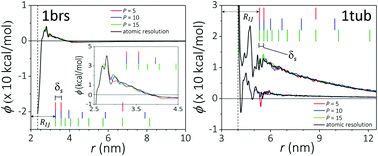Self-adaptive multiscaling algorithm for efficient simulations of many-protein systems in crowded conditions
Abstract
A method is described for the efficient simulation of multiprotein systems in crowded environments. It is based on an adaptive, reversible structural coarsening algorithm that preserves relevant physical features of the proteins across scales. Water is treated implicitly whereas all the other components of the aqueous solution, such as ions, cosolutes, or osmolytes, are treated in atomic detail. The focus is on the analytical adaptation of the solvent model to different levels of molecular resolutions, which allows continuous, on-the-fly transitions between scales. This permits the analytical calculation of forces during dynamics and preserves detailed balance in Monte Carlo simulations. A major computational speedup can be achieved in systems containing hundreds of proteins without cutting off the long-range interactions. The method can be combined with a self-adaptive configurational-bias sampling technique described previously, designed to detect strong, weak, or ultra-weak protein associations and shown to improve sampling efficiency and convergence. The implementation aims to simulate early stages of multimeric complexation, aggregation, or self-assembly. The method can be adopted as the basis for a more general algorithm to identify vertices, edges, and hubs in protein interaction networks or to predict critical steps in signal transduction pathways.

- This article is part of the themed collection: 2018 PCCP HOT Articles


 Please wait while we load your content...
Please wait while we load your content...